- Sustainability
- Risk Management
Risk Management
The Tamura Group is working to maintain and strengthen its risk management systems in order to address a wide range of management crises appropriately.
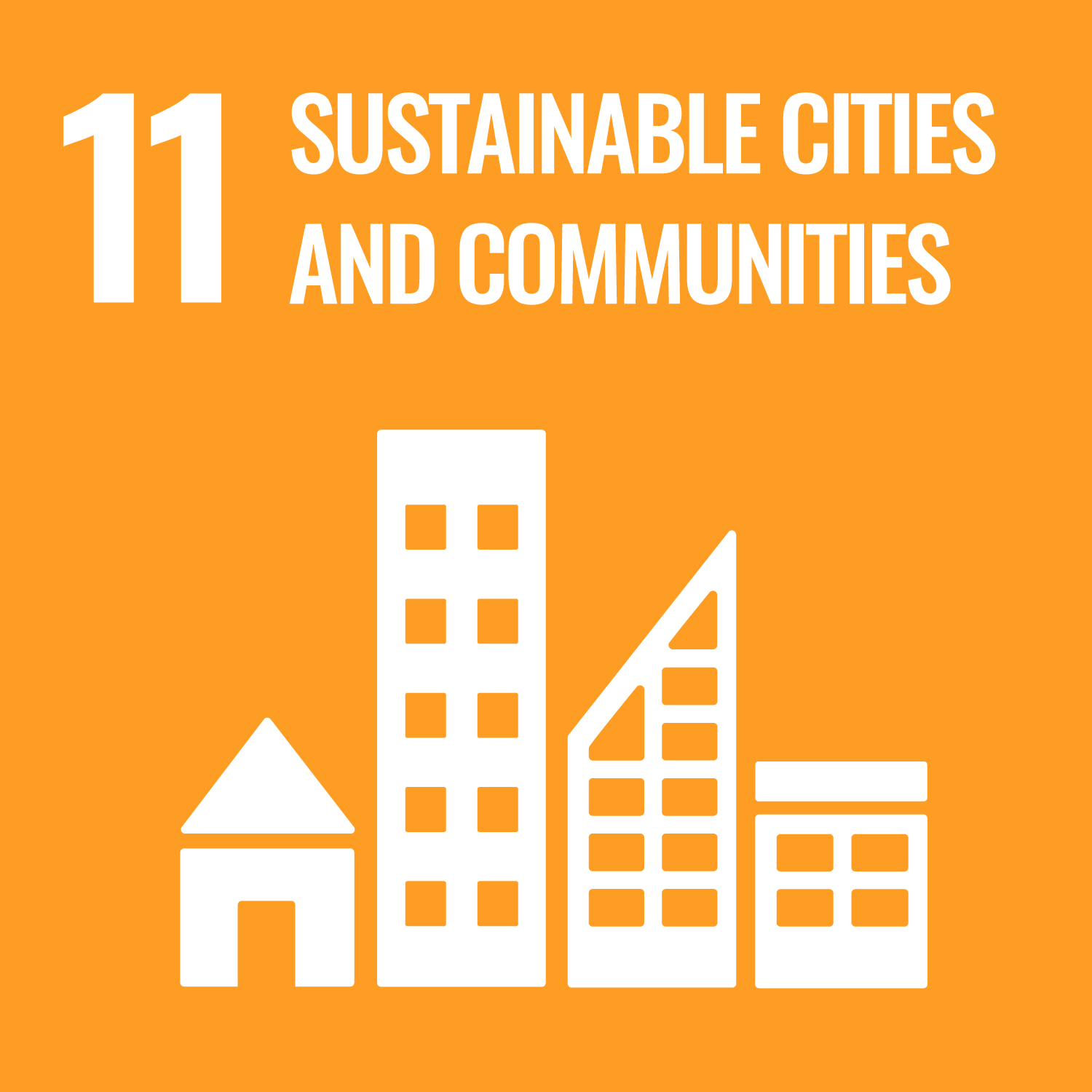
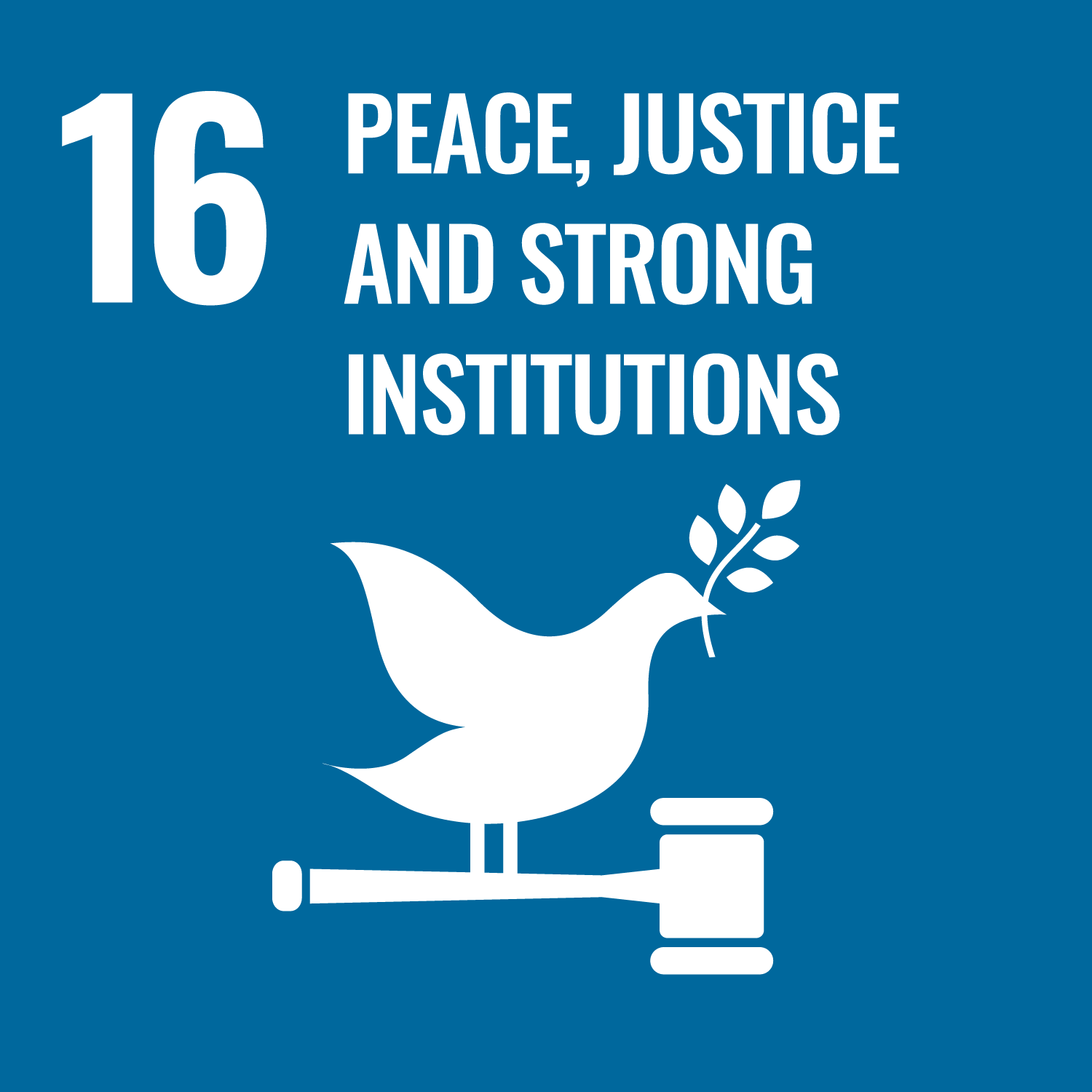
Risk Management
The Tamura Group engages in risk management with the aim of maximizing corporate value by comprehensively, inclusively, and strategically identifying, assessing, and optimizing various risks that could affect the Company. Toward that end, we have established internal structures for risk management and crisis management regulations, internal reporting regulations, information management regulations, guidelines for constructing Group emergency countermeasures, and other rules, and are building a structure for managing risks. At the same time, in recent years a variety of risks have emerged that have had a significant impact on society and the economy. The Tamura Group has deemed its conventional mechanisms, focused on risk and crisis management led by individual departments, to be insufficient. In the fiscal year ended March 2024, we conducted reviews of our systems and developed a Group risk management system as enterprise risk management (ERM) for assessing and managing company-wide risks.
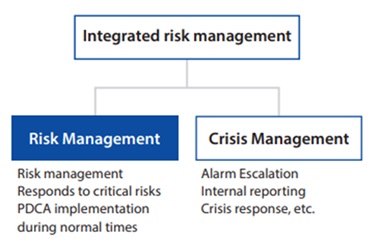
◆Risk management
When introducing group risk management, we also reviewed our governance structure. The Executive Officer Committee took the lead in clarifying roles in promoting risk management, including positioning the Board of Directors as a supervisory body and determining risk response policy for executive divisions. We also established a Risk Management Committee to support the Executive Officer Committee and advance its management activities. The Risk Management Committee consists of Executive Officer Committee members with the President as Chair. The risk management processes of the Tamura Group are as follows.
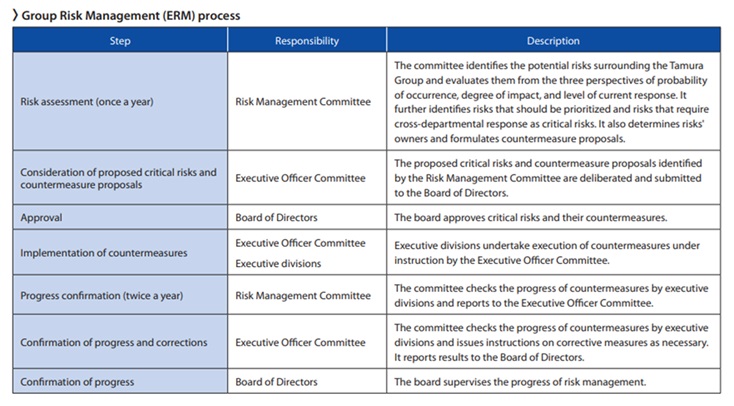
We conduct detailed risk assessments once every three years and simplified assessments in the remaining two years, with participation by persons responsible for business divisions and Head Office divisions. Assessments consist of quantitative and qualitative evaluations of nearly 100 items on the two axes of degree of impact and probability of occurrence. We map assessment results (see diagram at right) and identify critical risks. For identified risks, we determine the risks' owners and operate the PDCA cycle following the above process.
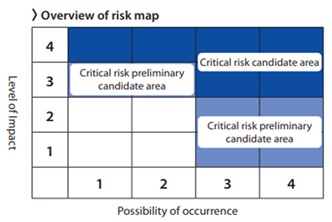
The Tamura Group engages in risk management with the aim of maximizing corporate value by comprehensively, inclusively, and strategically identifying, assessing, and optimizing various risks that could affect the Company. Toward that end, we have established internal structures for risk management and crisis management regulations, internal reporting regulations, information management regulations, guidelines for constructing Group emergency countermeasures, and other rules, and are building a structure for managing risks. At the same time, in recent years a variety of risks have emerged that have had a significant impact on society and the economy. The Tamura Group has deemed its conventional mechanisms, focused on risk and crisis management led by individual departments, to be insufficient. In the fiscal year ended March 2024, we conducted reviews of our systems and developed a Group risk management system as enterprise risk management (ERM) for assessing and managing company-wide risks.
◆Risk management
When introducing group risk management, we also reviewed our governance structure. The Executive Officer Committee took the lead in clarifying roles in promoting risk management, including positioning the Board of Directors as a supervisory body and determining risk response policy for executive divisions. We also established a Risk Management Committee to support the Executive Officer Committee and advance its management activities. The Risk Management Committee consists of Executive Officer Committee members with the President as Chair. The risk management processes of the Tamura Group are as follows.
We conduct detailed risk assessments once every three years and simplified assessments in the remaining two years, with participation by persons responsible for business divisions and Head Office divisions. Assessments consist of quantitative and qualitative evaluations of nearly 100 items on the two axes of degree of impact and probability of occurrence. We map assessment results (see diagram at right) and identify critical risks. For identified risks, we determine the risks' owners and operate the PDCA cycle following the above process.
Response to Security Export Controls
In order to prevent weapons as well as products and technologies that can be diverted to military uses from passing into the hands of countries, terrorists, and others who threaten or may threaten the international community, major countries, including Japan, have created international frameworks to control exports.
From the viewpoint of security, the Japanese government is working to ensure appropriate trade control in accordance with the Foreign Exchange and Foreign Trade Act. The Tamura Group has formulated security export control regulations in response to this and submitted them to the Ministry of Economy, Trade and Industry. Since then, we have organized a security export control system within the company, and have taken strict measures by thoroughly informing employees through transaction screening and in-house education. In light of recent geopolitical changes, we have also reviewed our efforts to become more global and systematic.
Business Continuity Plan (BCP)
In the wake of the Great East Japan Earthquake, we recognized the importance of business continuity planning, and in FY2011 we published the Tamura Group Large-Scale Earthquake Countermeasure Manual for all domestic and overseas offices. This is a compilation of responses from initial response immediately after a large-scale earthquake to recovery and business resumption.
In FY2012, the Tamura Group Emergency Preparedness Manual was expanded to include wind and flood damage, fire, large-scale power outage, mass infection, radioactive contamination, and war/revolution/civil unrest/riots as disasters other than large-scale earthquakes.
In FY2021, we transitioned to the "Tamura Group Emergency Preparedness Construction Guidelines," and in FY2022, we began operating a checklist and are working on continuous improvements.
◆Maintenance and storage of emergency supplies
Maintenance and storage of emergency supplies have been under way on establishment basis. In FY2012, within Japan, storage of drinking water and food supplies, enough to last 3 days for employees who cannot return home on foot, has already been completed. In addition, protective helmets for evacuation have been distributed to not only Tamura Group's employees but also all the staff of subcontractors working at the Group's establishments. Further, based on lessons learned from the Great East Japan Earthquake where means of communication were destroyed in the aftermath of the earthquake, alternative means of communication have been introduced.
Following the preparation of stockpiles of generators in case of a power failure, rescue devices, portable toilets, and blankets in FY2013, disaster stockpile sets were distributed to all employees along with introduction of carts to some offices/factories in FY2014. In FY2015, a cell phone recharger and other related devices were distributed to all employees to complement the disaster stockpile sets. Accordingly, stockpiling has been accomplished. Starting in FY2016, emergency supplies have been maintained regularly by improving stockpiles and donating foodstuffs close to the best-before dates to food banks, etc.
In order to prevent weapons as well as products and technologies that can be diverted to military uses from passing into the hands of countries, terrorists, and others who threaten or may threaten the international community, major countries, including Japan, have created international frameworks to control exports.
From the viewpoint of security, the Japanese government is working to ensure appropriate trade control in accordance with the Foreign Exchange and Foreign Trade Act. The Tamura Group has formulated security export control regulations in response to this and submitted them to the Ministry of Economy, Trade and Industry. Since then, we have organized a security export control system within the company, and have taken strict measures by thoroughly informing employees through transaction screening and in-house education. In light of recent geopolitical changes, we have also reviewed our efforts to become more global and systematic.
Business Continuity Plan (BCP)
In the wake of the Great East Japan Earthquake, we recognized the importance of business continuity planning, and in FY2011 we published the Tamura Group Large-Scale Earthquake Countermeasure Manual for all domestic and overseas offices. This is a compilation of responses from initial response immediately after a large-scale earthquake to recovery and business resumption.
In FY2012, the Tamura Group Emergency Preparedness Manual was expanded to include wind and flood damage, fire, large-scale power outage, mass infection, radioactive contamination, and war/revolution/civil unrest/riots as disasters other than large-scale earthquakes.
In FY2021, we transitioned to the "Tamura Group Emergency Preparedness Construction Guidelines," and in FY2022, we began operating a checklist and are working on continuous improvements.
◆Maintenance and storage of emergency supplies
Maintenance and storage of emergency supplies have been under way on establishment basis. In FY2012, within Japan, storage of drinking water and food supplies, enough to last 3 days for employees who cannot return home on foot, has already been completed. In addition, protective helmets for evacuation have been distributed to not only Tamura Group's employees but also all the staff of subcontractors working at the Group's establishments. Further, based on lessons learned from the Great East Japan Earthquake where means of communication were destroyed in the aftermath of the earthquake, alternative means of communication have been introduced.
Following the preparation of stockpiles of generators in case of a power failure, rescue devices, portable toilets, and blankets in FY2013, disaster stockpile sets were distributed to all employees along with introduction of carts to some offices/factories in FY2014. In FY2015, a cell phone recharger and other related devices were distributed to all employees to complement the disaster stockpile sets. Accordingly, stockpiling has been accomplished. Starting in FY2016, emergency supplies have been maintained regularly by improving stockpiles and donating foodstuffs close to the best-before dates to food banks, etc.
Information Management
◆Information Security Policy
The Tamura Group has defined a polity to ensure information security as follows.
◆Information Security Policy
The Tamura Group has defined a polity to ensure information security as follows.
(1) Direction
Recognizing the importance of information security, the Tamura Group has established a common framework to properly manage the matter across the Group. Anyone working for the Tamura Group is asked to be aware of the value of and handle responsibly the Group’s information asset they deal with in conducting their work.
(2) Risk assessment
The Tamura Group analyzes and assesses risks regarding its information asset systematically in accordance with the Group’s risk assessment process. The process also contributes to establishing and maintaining the common standards for the Group to manage various information asset properly, taking into account the characteristics of each business and types of information asset involved.
(3) Risk management
The Tamura Group values and intends to further develop a culture of managing information security properly. In response to changing business environment, the Tamura Group maintains a framework to ensure information security in a thorough and continuous way and manage associated risks properly.
(4) Compliance
The Tamura Group takes its social responsibility seriously and ensures its compliance with any laws and regulations as well as requirements of its stakeholders regarding proper information security management.
◆Information Security
In order to protect and manage corporate and personal information appropriately, the Tamura Group established the regulations on information management and has been working on information risk management. The measures that have been implemented include “technical security measures” such as network security safeguards, data access control, and restrictions on the use of external storage equipment for the prevention of cyberattacks and information leakage; “physical security measures” comprising the introduction of an ID card authentication system to prevent illegal invasion; and “education on appropriate handling of information” for employees. Efforts have been made to promote the above three measures by making them priority measures for information security.
Further, with regard to Specific Personal Information, etc., in response to the Act on the Use of Numbers to Identify a Specific Individual in the Administrative Procedure, utmost efforts have been made to protect Specific Personal Information, etc. through the development of organizations and systems to steadfastly execute safety management measures in each phase (i.e., acquisition, retention, use, provision, disclosure, correction, disuse, abolishment, and deletion of Specific Personal Information, etc.).
Information Disclosure
◆Appropriate, Timely Information Disclosure
Based on its Information Disclosure Policy, the Tamura Group is taking measures to provide accurate information in a timely manner to its stakeholders, including via the investor relations section on its website. Financial information including the summary financial statements and results presentation provided at semiannual analyst briefings is available on the website shortly after the financial results are announced. Other IR information such as letters to shareholders is also available here.
In order to protect and manage corporate and personal information appropriately, the Tamura Group established the regulations on information management and has been working on information risk management. The measures that have been implemented include “technical security measures” such as network security safeguards, data access control, and restrictions on the use of external storage equipment for the prevention of cyberattacks and information leakage; “physical security measures” comprising the introduction of an ID card authentication system to prevent illegal invasion; and “education on appropriate handling of information” for employees. Efforts have been made to promote the above three measures by making them priority measures for information security.
Further, with regard to Specific Personal Information, etc., in response to the Act on the Use of Numbers to Identify a Specific Individual in the Administrative Procedure, utmost efforts have been made to protect Specific Personal Information, etc. through the development of organizations and systems to steadfastly execute safety management measures in each phase (i.e., acquisition, retention, use, provision, disclosure, correction, disuse, abolishment, and deletion of Specific Personal Information, etc.).
Information Disclosure
◆Appropriate, Timely Information Disclosure
Based on its Information Disclosure Policy, the Tamura Group is taking measures to provide accurate information in a timely manner to its stakeholders, including via the investor relations section on its website. Financial information including the summary financial statements and results presentation provided at semiannual analyst briefings is available on the website shortly after the financial results are announced. Other IR information such as letters to shareholders is also available here.
Protection of Intellectual Property
In Tamura, the divisions of management, business, and intellectual property jointly carry out activities that ensure the respect for intellectual property right. In the course of business practice, we have been making efforts to appropriately create, protect, and use intellectual properties and to prevent infringing on other parties’ intellectual property right.
In Tamura, the divisions of management, business, and intellectual property jointly carry out activities that ensure the respect for intellectual property right. In the course of business practice, we have been making efforts to appropriately create, protect, and use intellectual properties and to prevent infringing on other parties’ intellectual property right.